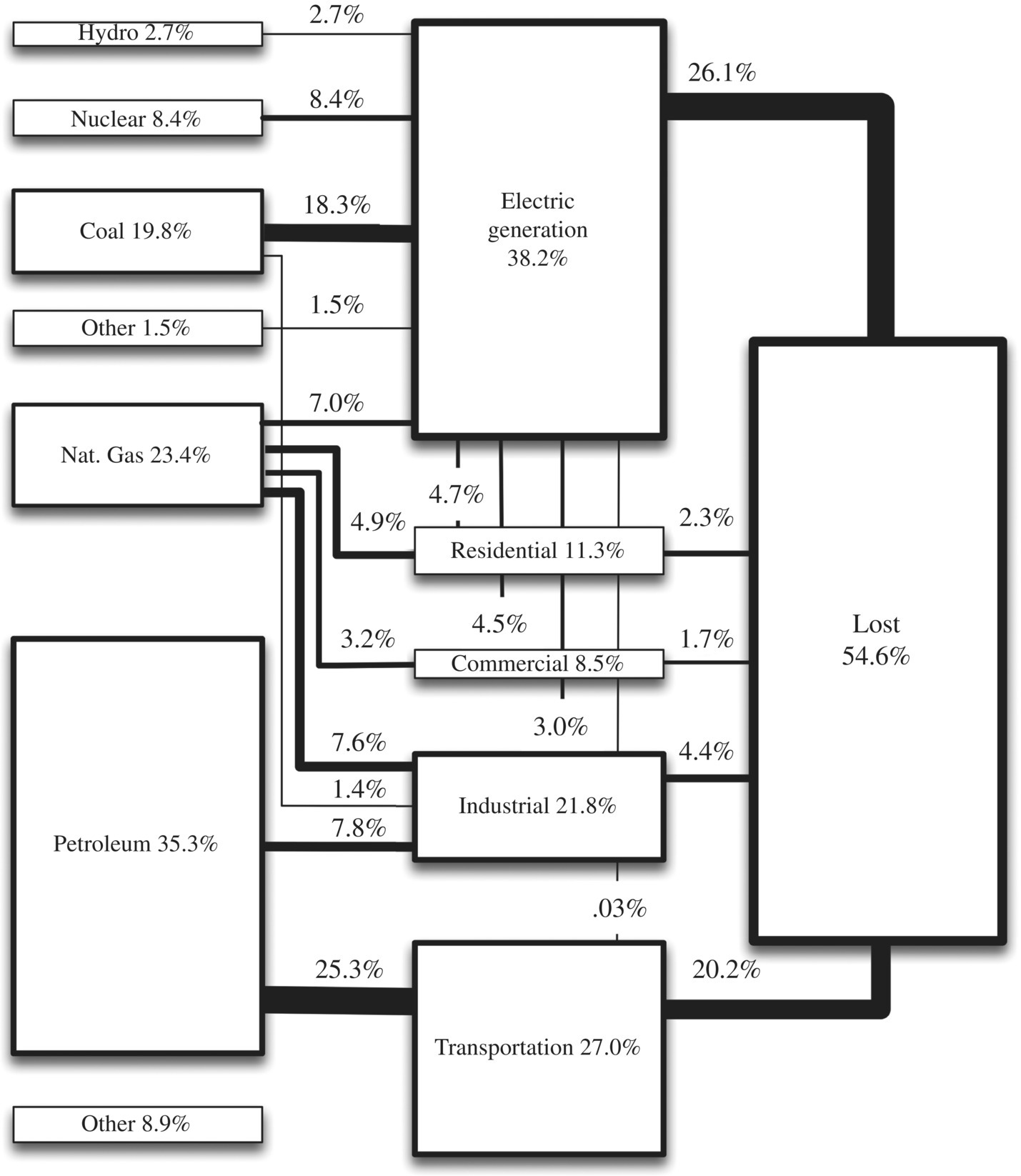12 Energy
Energy—derived from fossil fuels, wind, solar, and nuclear—propels everything. It runs power plants, heats our homes, powers our cars, and air-conditions our offices. Without energy, the telephone and Internet wouldn't work, and the modern conveniences we take for granted vanish. The United States consumes roughly 100 quads of energy/year. This is equivalent to 17.5 billion barrels or 735 billion gallons of crude oil. Approximately, 20% of this energy comes from coal, 23% from natural gas (NG), and 35% from petroleum. Figure 12.1 further indicates that 38% is converted into electricity to run computers, homes, offices, and factories. Transportation in the form of cars, trucks, busses, airplanes, ships, and trains consumes 27%. Incredibly, 55% is lost due to conversion, transmission, and nonconservation inefficiencies. For example, an incandescent light bulb based on Edison's invention wastes 95% of the energy needed to light up a room.

Figure 12.1 Most energy consumed in the United States comes from coal, NG, and petroleum—fossil fuels—and over half is lost due to inefficiency.
The energy sector is transitioning to renewable fuels such as wind, solar, tidal, and geothermal. This transition will take 40–50 years but radically alter another infrastructure—transportation. Automobiles, trucks, trains, and airplanes are likely to be running on electrons, hydrogen, ...
Get Critical Infrastructure Protection in Homeland Security: Defending a Networked Nation, 2nd Edition now with the O’Reilly learning platform.
O’Reilly members experience books, live events, courses curated by job role, and more from O’Reilly and nearly 200 top publishers.

